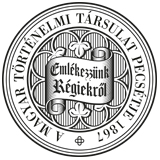Századok – 2015
2015 / 4. szám - KÖZLEMÉNYEK - Viskolcz Noémi: Esterházy Anna Júlia (1630-1669)
ESTERHAZY ANNA JULIA (1630-1669) 903 Összegzés Esterházy Anna Júlia csendes, visszahúzódó személyiségére férje, az energiával teli, nagy műveltségű és konfliktusoktól sem visszariadó Nádasdy Ferenc — nem utolsósorban a Wesselényi-mozgalomban játszott szerepe és tragikus sorsa - akaratlanul is árnyékot vetett. A források azonban a családját, rokonságát és udvartartását határozottan irányító, a férje mellett egyenrangú társként álló, ízlésében kifinomult nő képét mutatják. Mély vallásossága, a katolikus egyház intézményeinek pártfogolása révén a kor legjelentősebb patrónájává emelkedett. Befejezésképpen Sennyei István püspök egy olyan gondolatát idézném, amelyben Esterházy Anna Júliának a gyásznépnek tudott, de az utókor számára ismeretlen vonásairól - a viszályokat csillapítani tudó megfontoltságát és bölcsességét - is megemlékezett a temetésen: „Boldogh voltai Szollasidra nézveis, mert intésed Iffiaknak Tanusagh, Eöregheknek pedigh a ioban való öregbülés volt; nyaioskodasid Egyháziaknak, es Szerzeteseknek példa; Világiaknak Regula, Okoskodasid mindeneknek chudaia tapasztaltatott, es bizonytatott. ”204 ESTERHÁZY ANNA JÚLIA (1630-1669) by Viskolcz Noémi (Summary) As the fourth child of palatine Miklós Esterházy and Krisztina Nyáry, Júlia Anna Esterházy (1630-1669) was born into a very illustrious family. Thanks to the great number and variety of the extant sources - diaries, letters, inventories, registers, accounts, or the funeral oration made by bishop István Sennyei at her funeral - a fairly detailed view of her active life can be reconstructed. After her marriage with Ferenc Nádasdy in 1644, the countess governed her populous family and household in a calm but determined way, paying attention to her widespread kin, and to the destinies of her brothers and sisters. Her deep religious devotion, and the patronage she provided for the institutions of the Catholic Church, made her the most outstanding patroness in the second half of the 17th century. The complicated structure of her separate court, the artistic furnishing of her residence at Pottendorf, her religious and pious readings in Hungarian, and her social relations which reached the imperial court, all show the countess to have been a highly sophisticated woman of refined tastes, who stood as an equal partner by the side of her husband. 204 Sennyei I.: Keserves dichérete i. m. 12-13.
